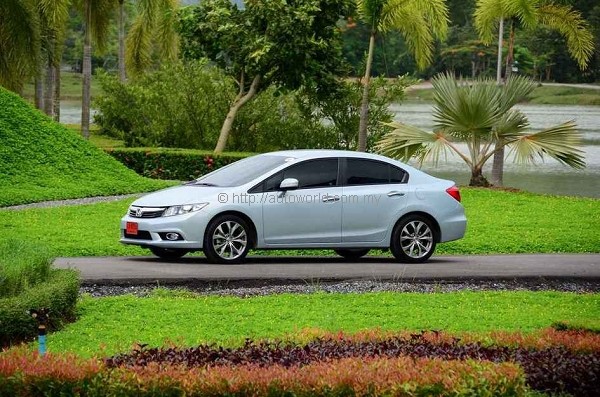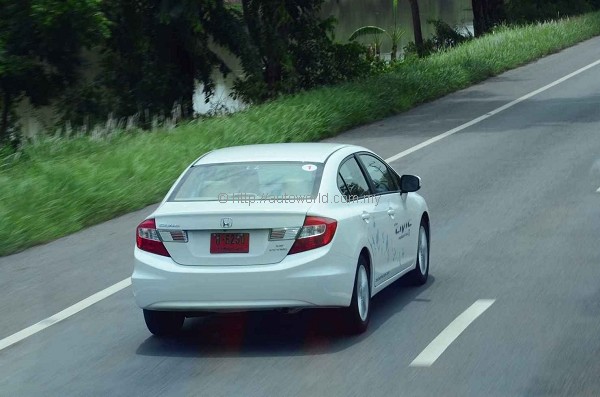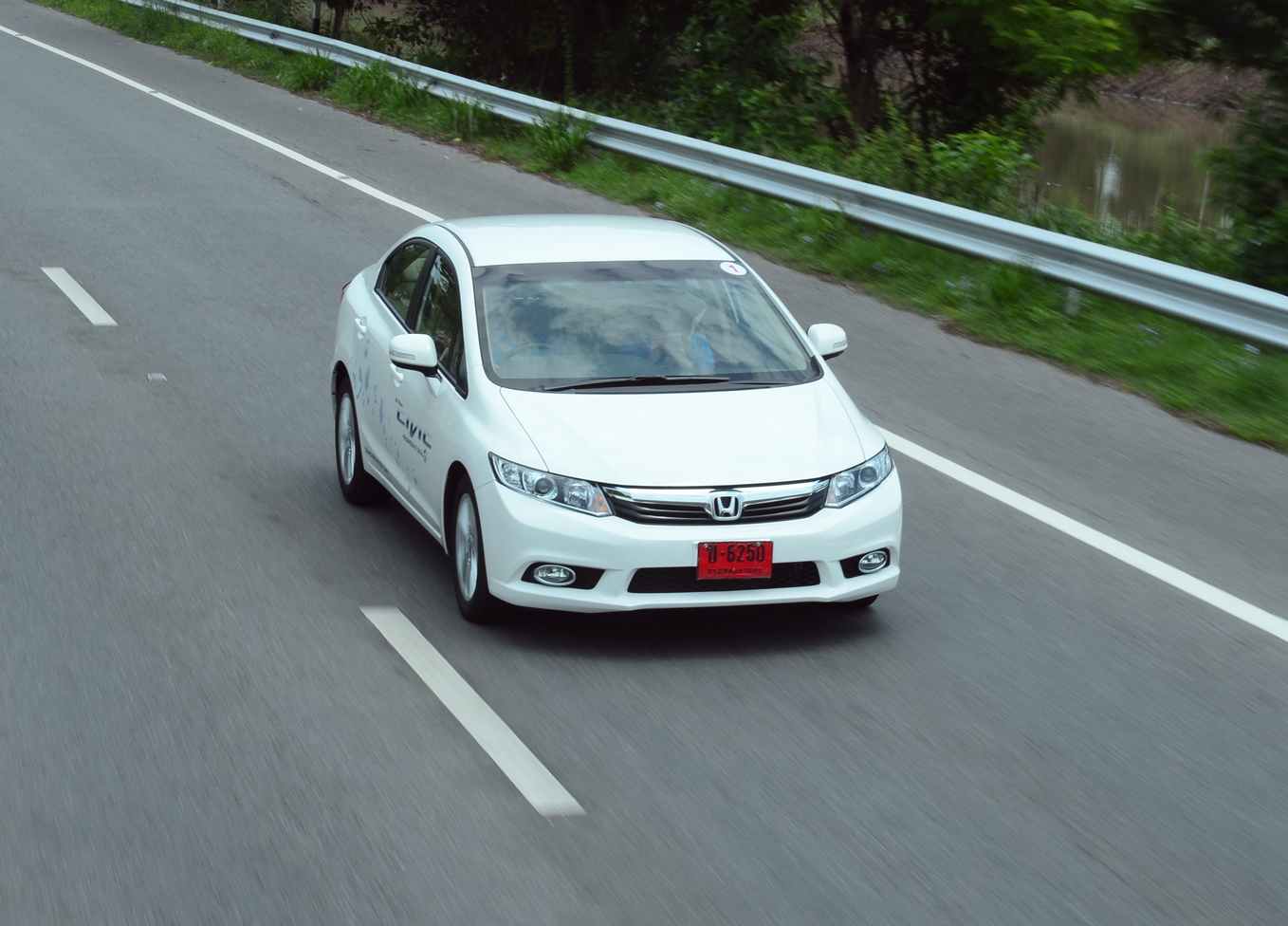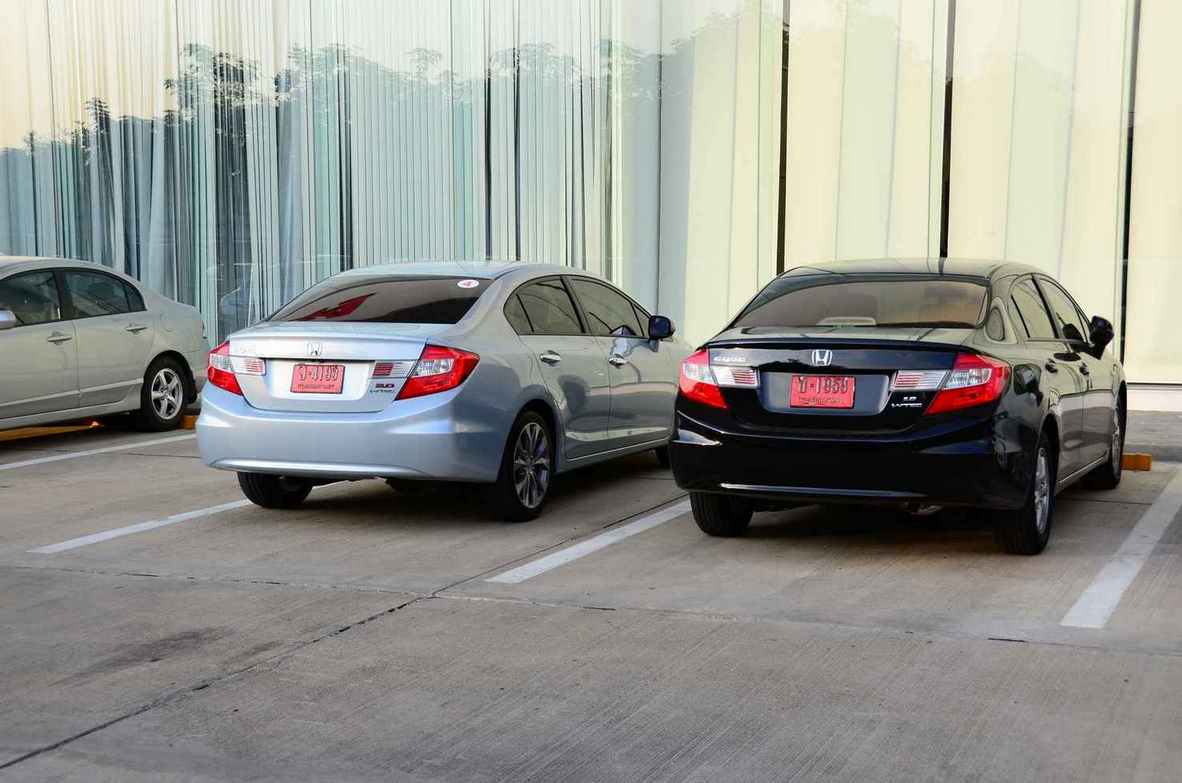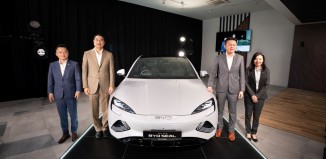All-New Honda Civic – Improved Fuel Efficiency & More Interior Space
The all-new Honda Civic will be launched in Malaysia within the next couple of weeks – already the motoring community is buzzing with comments about its new looks, with the usual die-hards saying they prefer the older shape to the new one.
I have actually seen it, and have driven it for a short stint in Thailand – it is just a little smaller, but I liked it on first sight – the lines are cleaner, and despite a shorter wheelbase, the designers have managed to increase the cabin space. Overall length is 4,525mm, which is 15 mm shorter, while the wheelbase (centre to centre distance between the front and rear wheels) has shrunk by 30mm from 2,700mm to 2,670mm. Overall width and height remain at 1,755mm and 1,435mm respectively.
Despite the smaller dimensions in terms of the length and the wheelbase, there is an increase in the cabin length by 10mm, and a corresponding increase in rear leg room by 40mm.
The rear passengers get another 15mm clearance to the space under the front seat so they can put their feet in more comfortably. Shoulder room is increased by 75mm, while ‘couple distance’ (distance between driver and passenger) is increased by 10 mm – through the simple process of widening the part of the cabin that is above the doors.
The new Honda Civic has a slightly stubbier body with a shorter front end, and what I consider a ‘neater look’. It seems that ‘clean’ is in, now, from the looks point of view, and the new Civic certainly does look cleaner and trimmer. I don’t think the Civic can ‘grow’ any larger than the current outgoing model, so don’t be surprised to see small variations in size up or down with forthcoming models, unless Honda decides to upsize the Civic to the next larger category, and bring the City up to the current Civic size, and then they will have to find a replacement model to cover the current City size.
The body weight has been reduced by approximately 7 percent, but the use of more high strength tensile steel, plus refinements in chassis engineering has resulted in a 10 percent more rigid body. The new Civic has obtained a 5-star EURO NCAP safety rating for occupants and pedestrian. Honda’s Advanced Compatibility Engineering (ACE) body structure provides improved crash compatibility between vehicles of different size and ride height. It is embedded with front and side Airbags with Occupant Position Detection System (OPDS); anti-lock brakes with Electronic Brake Distribution (EBD) and Vehicle Stability Assist (VSA). Taking safety to a higher level, the Civic has combined the VSA system with an advanced Motion Adaptive EPS (Electric Power Steering) system that helps drivers to control during oversteer and understeer conditions.
The interior is well appointed, and now includes a larger driver interface – it still has the two-tiered meter display, except that the top interface has more driving information including a 5-inch information display that gives the driver real-time information that can help to maximise fuel efficiency – this is a thoughtful feature that helps to reduce not only the carbon footprint of the car, but also to keep fuel costs down. The new Civic is Honda’s first non-hybrid vehicle fitted with ECO Assist functions, which include the ECON Mode button. When activated, the ECON Mode button combines and performs a series of ECO Assist functions including optimizing control of the Drive By Wire (DBW), Automatic Transmission (AT) Shift Map, air conditioner, engine and related power train components. A driver feedback function with the ambient meter display that changes background colours provides real-time guidance to drivers to achieve higher fuel efficiency.
The new Civic Navi variant has a built-in NAVI operation system with a touch screen display; the one I tested in Thailand came with a Thai map – it is still left to be seen how the Malaysian navigation system will perform. In addition, there is a reverse camera that makes reversing a breeze. The 2.0 Civic variant offers premium features such as Driver Power Seat, Head Lamp auto-off Timer, Smart Entry and Push Start Button, Cruise Control and side SRS Airbag.
The new Civic is available in Malaysia in three variants – 1.8L i-VTEC, 2.0L i-VTEC and 2.0L Navi. The 1.8L’s engine remains the same as the existing model but has been enhanced for better fuel consumption. The 2.0L variant now adopts a SOHC i-VTEC engine as compared to the previous DOHC i-VTEC. A fourth variant would be the hybrid model, which I understand will be supplied with Lithium-ion batteries.
The test cars we drove in Thailand were the 1.8 litre and the 2.0 litre variants, both of which were automatics. On the go, there didn’t seem that much difference in the two engines in terms of get-up-and-go, especially in the lower RPM range. However, as you go up the RPM range, the additional 10 kW of power (roughly 36 horsepower more) will have a telling effect. What I glean from this is that the engine designers have leaned off the mixtures and the response at the lower end to encourage better fuel economy for the 2.0 litre engine, whilst still providing the maximum power at the top end of the spectrum.
For the record, the 1.8 litre engine provides 104 kW at 6,500 rpm, and maximum torque of 174Nm at 4,300 rpm, identical figures to the outgoing 1.8 litre engine, except that the old engine made the same power at 6,300 rpm. The 2.0 litre engine is now a SOHC unit, and makes 114 kW at 6,500 rpm, with maximum torque of 190 Nm at 4,300 rpm. The outgoing DOHC 2.0 litre engine makes the same 114 kW at 6,000 rpm, and the same maximum torque of 190 Nm at 4,500 rpm. The slight variations in the engine performance curves do make quite an impact on the engine performance – and since Honda appears to be heading more into ‘green’ technology, this new engine configuration is in keeping with their approach. The DOHC units had a more ‘urgent’ response to throttle, and would go down well with the driving enthusiasts, but I suppose a more ‘linear’ approach has its benefits in better fuel economy – as most of the Civic mainstream users would agree.
In terms of drivability, the new Civic is beyond reproach. The suspension remains a 4-wheel independent set-up, with MacPherson struts up front and a multi-link arrangement at the rear. Our test route was made up mostly of highway driving, but there were a couple of sweeping corners where I could try it out, and it felt good, with the Civic very stable. There shouldn’t be any problems in the handling department, and I will reconfirm this when I get another go at the new car when it arrives.
The all-new Honda civic will go down well with the Malaysian motoring public in general. It drives well and handles well; the additional ECO Assist functions will be an additional benefit as it will help to keep fuel costs down in the long run – this type of set-up easily covers more than 90 percent of the typical road users here. The remaining 10 percent would be the motoring enthusiasts who would have preferred a DOHC type of engine – to them this is the end of the glorious days of the Honda DOHC Civic – but car makers being car makers, we may yet see a revival later.




